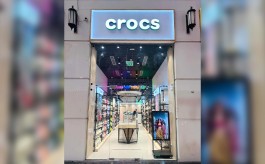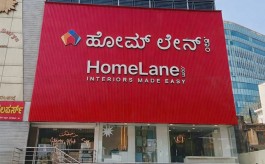IIM-A study suggests'brick & click' model for retail growth
By Pray Jani | Vjmedia Works | March 05, 2014
Study also argues difficulty in funding as one of reasons for opting for combination of e-commerce and small mom-and-pop store
 With the growing real estate prices hampering the penetration of large
format retailing, a study at the Indian Institute of Management, Ahmedabad (IIM-A) suggests a combination of online and kirana
(mom-and-pop) stores. Terming it as'brick and click' model, the study suggests retailers should
innovate to increase business by going in for a combination of e-commerce and small brick-and-mortar stores.
With the growing real estate prices hampering the penetration of large
format retailing, a study at the Indian Institute of Management, Ahmedabad (IIM-A) suggests a combination of online and kirana
(mom-and-pop) stores. Terming it as'brick and click' model, the study suggests retailers should
innovate to increase business by going in for a combination of e-commerce and small brick-and-mortar stores.
Titled'Online Retailing Paired with Kirana - A Formidable Combination for
emerging Markets', the study has been authored by IIM-A faculty member Prof.
Piyush Sinha, along with Prof. Srikant Gokhale and Saurabh Rawal.
The study argues that there are four factors that advocate a combined model of
e-commerce and small kirana stores including rapid penetration of technology,
growing consumer preferences, growing adoption of online medium by stores and
brands and growing real estate prices.
The study highlights several hurdles that the organised retailing needs to
overcome, such as rise real estate prices, lack of viable store locations,
overhead costs, pilferage, lack of trained manpower and many more. On the other
hand internet retailing is accessible even through a smartphone, saves time and
fuel for the consumers and demands no expensive real estate investment for
expansion.
"The growth story will be that such a growth will not remain confined to the
urban centers of any nation but will rather spread more rapidly in the rural
areas, where both organized retail have found difficulty in serving this base of the
pyramid. The inability of organized retail to make a strong presence in these
countries will be tapped by the growing number of internet users who will
largely prefer to either shop through the internet and or shop from nearby
traditional store. A firm with an omni retail strategy that merges the two
formats may prove to be formidable in service a diverse and large country like
India and China,†the study states.
Quoting a Mckinsey report, the study estimates that the number of internet
users in India will rise to 370 million, surpassing all developed countries by
2015. Moreover, admitting that a majority of the Indian population is not very
savvy when it comes to buying from the internet., the study states that
e-commerce companies have acknowledged this hurdle and therefore are innovating
business models to suit the needs of the typical India consumer. For instance,
discount and other promotional offers are strongly believed to have led
customers from the physical stores to virtual stores.
The study also gives examples retailers like Big Bazaar, Shoppers Stop and
Tata's Croma to suggest that brick and mortar retailers are identifying the
opportunities offered by electronic commerce in India.
Further, the study attributes steep rise in real estate prices as the reason
for retailers being discouraged from opening more and more stores.
As per the study, real estate costs comprise upto 10, and sometime more, of
sales in India and this same component is about 3-4 per cent in the case of the
developed economies.
"In 2012, the store based retailing contributed to about Rs. 20,000
billion whereas non-store retailers stood at about 175 billion. This signifies
a growth of 74 per cent in store-based and 223 per cent growth in non-store
between 2007 and 2012. There are more than 14 million physical stores, of which
12 million alone are small grocery outlets. The smaller stores are also very
high value formats. The ubiquitous Kirana store provided adequate merchandise
mix, home delivery credit and personalised services. Consumers do not find the
prices very high as they sell at the price printed on the pack and do not give
discounts unless offered by the manufacturers. Their merchandise mix is also
localised, especially with regard to food and edible products," it states.
Meanwhile, the study also argues the difficulty in funding as one of the reason
for opting for a combination of e-commerce and small mom-and-pop store.
"More than 50 e-commerce companies having received over $700 million in
funding since 2010 establishing that e-commerce happens to be one of the most
sought after investment sectors in the industry today. On the other hand the
physical retailers are finding it difficult to raise money. Only large
corporations find it a little easy," the study states.








